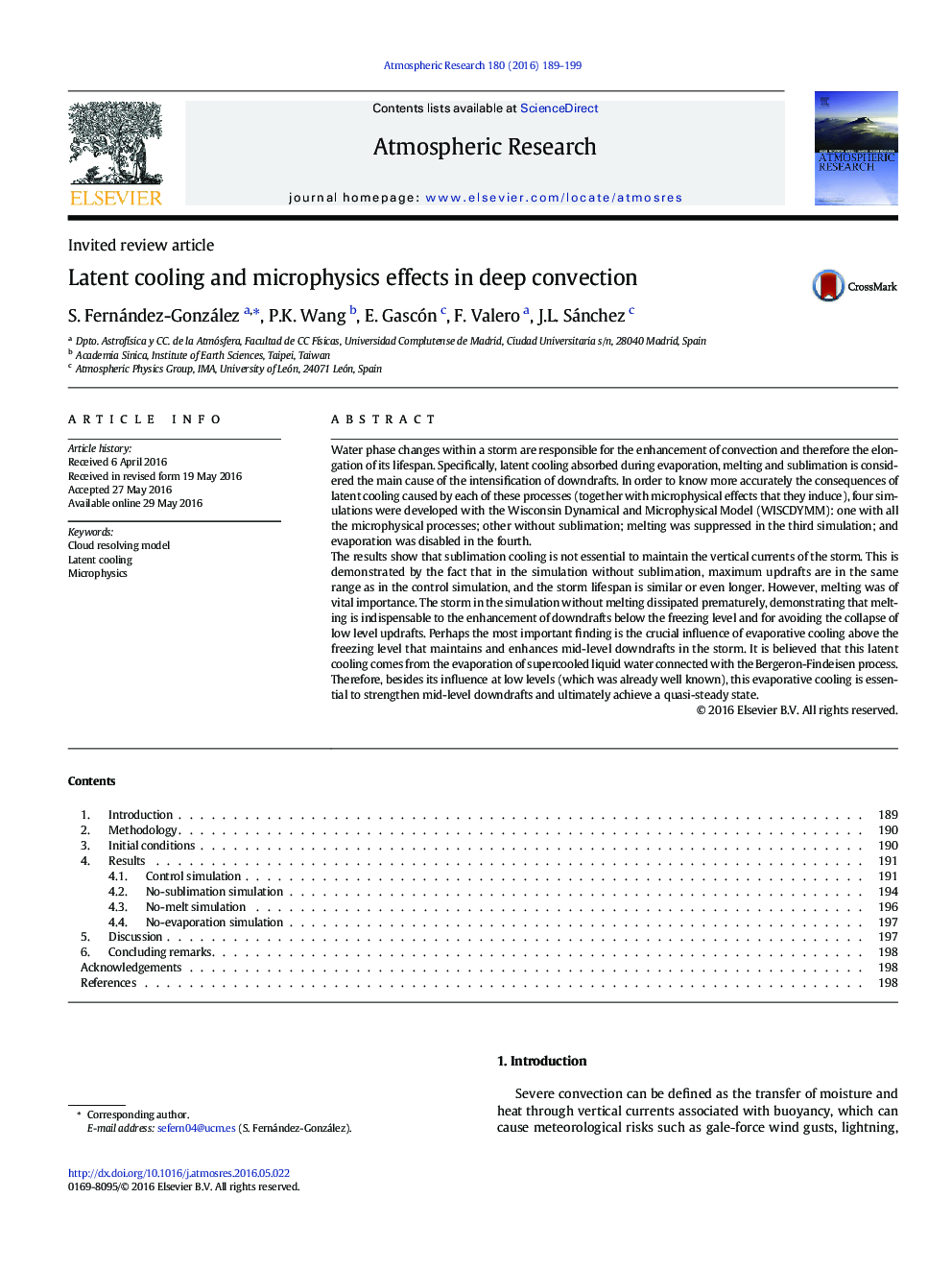| Article ID | Journal | Published Year | Pages | File Type |
|---|---|---|---|---|
| 6342909 | Atmospheric Research | 2016 | 11 Pages |
Abstract
The results show that sublimation cooling is not essential to maintain the vertical currents of the storm. This is demonstrated by the fact that in the simulation without sublimation, maximum updrafts are in the same range as in the control simulation, and the storm lifespan is similar or even longer. However, melting was of vital importance. The storm in the simulation without melting dissipated prematurely, demonstrating that melting is indispensable to the enhancement of downdrafts below the freezing level and for avoiding the collapse of low level updrafts. Perhaps the most important finding is the crucial influence of evaporative cooling above the freezing level that maintains and enhances mid-level downdrafts in the storm. It is believed that this latent cooling comes from the evaporation of supercooled liquid water connected with the Bergeron-Findeisen process. Therefore, besides its influence at low levels (which was already well known), this evaporative cooling is essential to strengthen mid-level downdrafts and ultimately achieve a quasi-steady state.
Keywords
Related Topics
Physical Sciences and Engineering
Earth and Planetary Sciences
Atmospheric Science
Authors
S. Fernández-González, P.K. Wang, E. Gascón, F. Valero, J.L. Sánchez,
